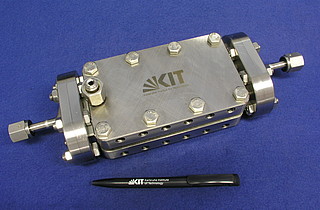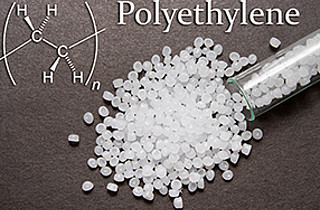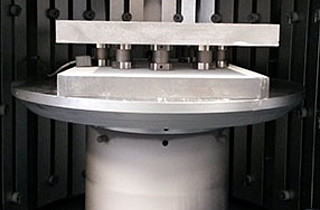Intermetals as a catalytically active layer
Catalytic, intermetallic coatings are used in many production processes. Due to the large reactive surface area, high reaction rates and high selectivity can be achieved.Catalytic, intermetallic coatings are used in many production processes. Due to the large reactive surface area, high reaction rates and high selectivity can be achieved.
State of the art
A well-known process for coating is DC magnetron sputtering (cathode sputtering under DC voltage), in which components of a target are dissolved out and deposited by ion bombardment. Previously, such sputtering targets were either produced by melting the starting materials, in this case gallium and palladium, together and then crushing them or by multi-stage synthesis in organic solvents. This means that the components are present in the target in elemental form and not as an intermetallic compound. Neither method is suitable for the efficient production of large-area and uniform coatings.
Technology
Researchers at KIT have succeeded in producing a sputtering target with atomically homogeneous distribution using spark plasma sintering on copper disks. This is based on powder of the intermetallic compound of gallium and palladium. This intermetallic sputtering target forms the basis for synthesizing the layer via DC magnetron sputtering. With this well-known process, single-phase intermetallic layers with a thickness of a few nanometers to approx. one micrometer can be produced by using the novel sputtering targets. By masking the surface to be coated beforehand, the intermetallic compounds can be applied in defined shapes. The catalytic activity can be modified by structuring the layers in this way.
Advantages
At KIT, the intermetallic layers produced in this way were tested in the semi-hydrogenation of acetylene in a microstructured reactor. An increase in activity by a factor of 100 (in relation to the amount of palladium in the reactor) was calculated while maintaining the same selectivity to ethylene. In addition, the use of the copper disk as a substrate results in low material costs. Solvents can be completely dispensed with.
Options for companies
In addition to catalytic layers, the synthesis route could also be useful for coatings for thermal or corrosion protection. KIT is looking for partners to further develop the technology.
Your contact person for this offer

Innovation Manager Karlsruhe Institute of Technology (KIT)
Innovation and Relations Management (IRM) Phone: +49 721 608-25587
Email: rainer.koerber@kit.edu






